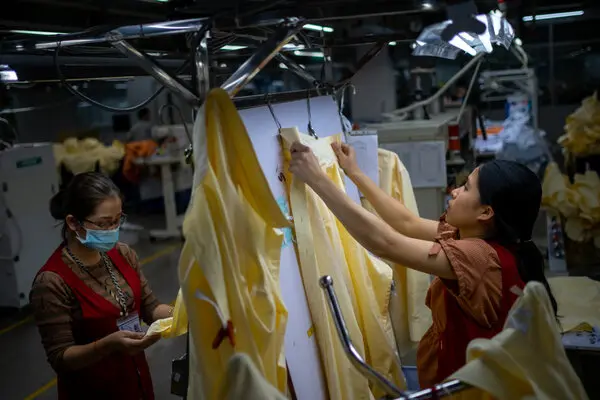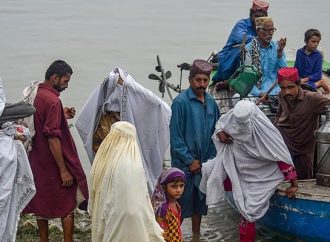Skilled Workers Face Uncertainty Two decades ago, Jinul Abedeen moved to New Delhi to master Zardozi, an ancient and intricate threadwork technique, hoping to secure a stable livelihood for his family. His gamble paid off. For the past 12 years, he has worked at Orient Craft, a major garment factory supplying global brands like Gap,
Skilled Workers Face Uncertainty
Two decades ago, Jinul Abedeen moved to New Delhi to master Zardozi, an ancient and intricate threadwork technique, hoping to secure a stable livelihood for his family. His gamble paid off. For the past 12 years, he has worked at Orient Craft, a major garment factory supplying global brands like Gap, Ralph Lauren, and American Eagle.
“It takes a year to learn this skill properly,” Abedeen said. “Otherwise, it wouldn’t be possible to produce such detailed work.”
Now, his hard-earned job and income are under threat from forces beyond his control: 50% tariffs imposed by the United States on Indian goods.
Trump’s Tariffs and the “America First” Policy
On Wednesday, the White House announced tariffs on Indian exports, among the highest ever imposed, affecting textiles, diamonds, steel, and automobiles.
-
Half of the levies are punishment for India’s increased Russian oil purchases after the Ukraine invasion.
-
The other half align with Trump’s “America First” policy, aimed at reducing U.S. trade deficits, which stood at $45.7 billion with India in 2024.
The tariffs clash with Prime Minister Narendra Modi’s “Make in India” initiative, which seeks to turn India into a manufacturing hub, boost economic growth, and create millions of jobs.
Impact on Workers
At Orient Craft, which exports roughly 82% of its products to the U.S., the mood is tense.
-
Neeraj Pandey, a factory worker for 22 years, said:
“We could lose everything. Our employment will be gone.”
-
Sumitra Devi, another worker, highlighted the social impact:
“Women in my village usually don’t work. My earnings allowed my daughters to attend private school. If I lose my job, everything changes.”
The Stakes for India’s Economy
-
“Make in India”, launched in 2014, has received over $26 billion in incentives, aiming to reduce import dependence and strengthen manufacturing.
-
Manufacturing contributes 17% of India’s GDP, providing a real alternative to China for global investors.
-
Factories like Orient Craft are struggling; some U.S. orders are already on hold, threatening 20 million cotton mill workers nationwide.
-
Export hubs face potential declines of 60–90% in U.S. orders worth $5.4 billion, according to trade experts.
Sudhir Dhingra, Orient Craft’s owner, described the situation as “worse than Covid.”
Diamonds, Apparel, and Diversification
The diamond sector, concentrated in Surat, employs around 5 million people and accounts for 7% of India’s GDP. Export reliance on the U.S. means that any slowdown could cause job losses and salary cuts.
Industry leaders are exploring new markets in Russia, Europe, and South America, but tariffs risk long-term damage to Indo-American trade relations.
Modi’s Response
Unlike other nations seeking tariff reductions, Modi has refused to compromise:
-
India labeled the tariffs as “unfair” and “unjustified”.
-
Modi emphasized protection for farmers, fishermen, and dairy workers.
-
Government measures include suspending import duties on raw materials and accelerating export market diversification.
Despite these steps, factory workers remain vulnerable.
Pandey said: “If my job goes away, I have no other work. If a compromise is possible, that would help. Otherwise, what can we do?”
Key Highlights
-
U.S. tariffs on Indian goods hit textiles, diamonds, steel, and automobiles.
-
Trump’s “America First” policy prioritizes U.S. trade deficits.
-
India’s “Make in India” initiative faces severe challenges.
-
Millions of workers risk losing their livelihoods.
-
Government is exploring diversified export markets to cushion the impact.










Leave a Comment
Your email address will not be published. Required fields are marked with *